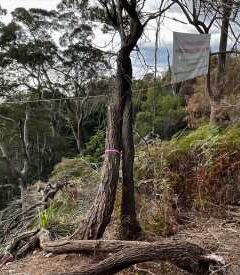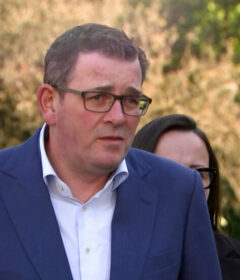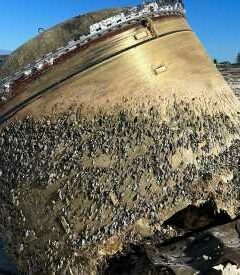Home » Australasia »
How could a newly-built tower crack?
On Monday, Christmas Eve, hundreds of people were forced to leave their homes in a 38-storey tower in Sydney, Australia, when a huge crack was found in its wall.
Authorities later found the split in a support wall on the building’s 10th floor. Engineers estimated it caused parts of the building to shift by up to 2mm.
Although nobody was injured, Australians were shocked by the fault in the newly-built Opal Tower in Sydney’s Olympic Park.
The shiny high-rise boasted million-dollar apartments, and the developer and builder are well regarded in the industry.
The tower’s construction and design has since been called into question, as have the standards of the wider Australian building industry itself.
Both the tower’s builder and the developer defended the construction, saying that the temporary relocation was just a precautionary measure while repairs are carried out and that the tower remains “structurally sound”.
What do we know about the crack?
After they had moved back in following Monday’s evacuation, residents were forced to move out on Friday for a second time, as investigators scrambled to find the cause of the fault.
The tower’s builder, Icon Construction, said the building was safe and the disruption was simply to allow investigations and repairs to take place as quickly as possible.
The company identified the crack in a pre-cast concrete panel. This panel was part of a chain of other panels up and down the building, thus rendering 51 units of the tower’s 392 uninhabitable.
Pictures on social media showed the building’s damage, with crumbling walls, loose plaster and jammed doors.
However, the engineering firm WSP leading the investigation have not determined why the panel cracked.
“The reasons for the failure at the moment are unknown,” WSP’s Guy Templeton said on Thursday.
What are investigators doing now?
Mr Templeton said engineers were “working around the clock” to investigate and repair the site.
The New South Wales government has also launched its own probe, headed up by the deans of two engineering schools from Sydney universities.
One of those leads, Prof Mark Hoffman from the University of New South Wales, told the BBC the investigation would focus on theconcrete panels, which were made offsite.
These could be found in 16 other locations around the building and had been installed to build balcony recesses into the building, he said.
He described the fault as “completely out of the ordinary”, noting that the Australian construction industry was “world-renowned”, and regulated by a framework of national and state codes.
What does this say about the industry?
However other experts say the enforcement of those regulations has been lacking.
In February, a government-commissioned report found a “prevalence of serious compliance failures in recently constructed buildings”.
The Shergold-Weir report had been commissioned in response to the UK’s Grenfell Tower tragedy, and was scathing in its assessment. In particular, it specified the industry’s lack of oversight and noted that “those involved in high-rise construction have been left largely to their own devices”.
Prof Bill Randolph from the University of NSW told the BBC that the industry’s private certification process – by which developers can choose their own certifier – is “hugely flawed”.
“In a big building… no final certifier signing off would really have much idea about the details of what went on,” he told the BBC. “The sub-contractors… sign off on their own work and just pass it on to the next person up the chain”.
The rapid pace by which high-rise buildings had sprung up in Sydney was also concerning, he added.
Engineers Australia, the professional body representing the trade, also described the approval process as an “overarching problem”.
“[We] hear from our members that the people signing off the work often do not have the qualifications or experience to actually be in a position to make an informed judgement,” said spokesman Brent Jackson.
While the causes of the Opal Tower’s structural faults are still unknown, concerns over certification were prevalent across the industry, he said.
Source: Read Full Article



